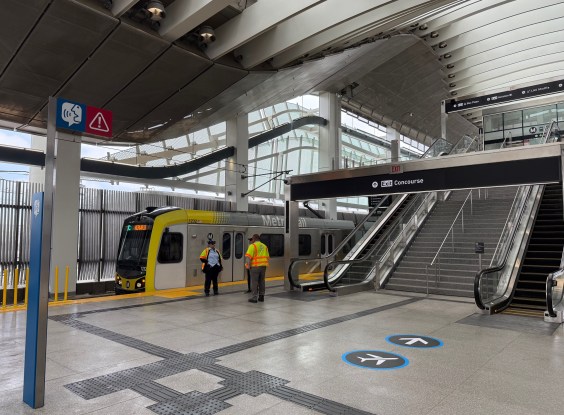- Many transit agencies are considering going fare-free after the pandemic, but no one has figured out who should pay it if riders aren't. (The American Prospect)
- Improving the busiest rail corridor in the U.S., between Boston and Washington, D.C., will cost an estimated $100 billion. Which once again raises the question: how do other countries build projects like this for a fraction of the price? (Motherboard)
- The federal government's failure to regulate autonomous vehicles allows states to treat drivers as unwilling guinea pigs. (Streetsblog)
- San Diego is revamping the car-centric Mira Mesa neighborhood by breaking it up into several higher-density, walkable villages with 90 miles of new bike lanes. (Union-Tribune)
- The Federal Transit Administration gave preliminary approval to bus rapid transit on Atlanta's Campbellton Road. (AJC)
- Charlotte is likely to choose a route for the Silver Line that skirts the northern edge of town, which would spur development but won't take as many people to their jobs. (WFAE)
- Downtown Hartford became a sea of surface parking after the 1960s that the city is now trying to redevelop. (CNU Public Square)
- Omaha officials think they can pay for a $350 million streetcar with taxes from new development along the line. (World-Herald)
- Detroit Mayor Mike Duggan will fund paratransit after the federal government said the city council's decision not to approve a contract was against the law. (Detroit News)
- Pedestrians make up an increasing number of Austin's traffic deaths (Monitor), but the good news is that crashes are down 30 percent at intersections that have undergone Vision Zero improvements (KXAN).
- These five bike routes will take you past some of Seattle's best holiday lights. (Seattle Times)
Stay in touch
Sign up for our free newsletter
More from Streetsblog USA
Everything You Need To Know About Zohran Mamdani — From the Pages of Streetsblog
Our New York team offers you the transportation policy highlights of Mayor-elect Zohran Mamdani's improbable 2025 run for City Hall.
Wednesday’s Headlines Want to Age in Place
American cities aren't particularly friendly to seniors who can no longer drive, fueling isolation and loneliness.
Some Stories That Shaped L.A. in 2025
And from the Left Coast, let's get a year-in-review, California-style.
Year in Review: What Gave Us Hope in a Dark 2025
Yes, this year was tough. Yes: we're still ending it with hope for the future.
Tuesday’s Headlines Pay Your Own Way
The Trump administration pulled $4 billion in grants for high-speed rail, and now California doesn't want it back.






